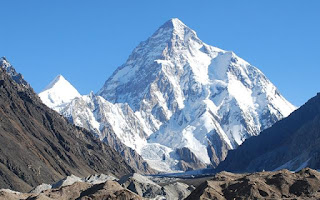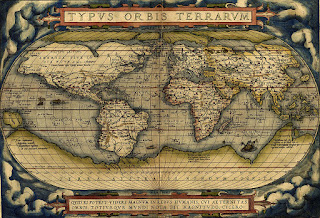INTRODUCTION
Whenever we listen the word mars the first thing which come in our mind is Aliens or a planet similar to Earth etc. but the mars is totally different from our imagination. Mars also known as 'Red planet' because of presence of iron peroxide. It is the fourth planet from the sun and second smallest planet on the Earth. It is a place where the probability of life is high. Scientist are trying to discover more and facts about mars. Mainly volcanoes and craters are present on the surface of it. A large number of volcanoes on the surface of mass is also reason why it seems to be red. Mars (Greek :Ares) God of war. The rotational period and seasonal cycles of Mars are likewise similar to those of Earth, as is the tilt that produces the seasons. Mars is the site of Olympus Mons, the largest volcano and second-highest known mountain in the Solar System, and of Valles Marineris, one of the largest canyons in the Solar System. The smooth Borealis basin in the northern hemisphere covers 40% of the planet and may be a giant impact feature. Mars has two moons, Phobos and Deimos, which are small and irregularly shaped. These may be captured asteroids, similar to 5261 Eureka, a Mars trojan.
There are ongoing investigations assessing the past habitability potential of Mars, as well as the possibility of extant life. Future astrobiology missions are planned, including the Mars 2020 and ExoMars rovers. Liquid water cannot exist on the surface of Mars due to low atmospheric pressure, which is about 6⁄1000 that of the Earth's, except at the lowest elevations for short periods. The two polar ice caps appear to be made largely of water. The volume of water ice in the south polar ice cap, if melted, would be sufficient to cover the entire planetary surface to a depth of 11 meters (36 ft). In November 2016, NASA reported finding a large amount of underground ice in the Utopia Planitia region of Mars. The volume of water detected has been estimated to be equivalent to the volume of water in Lake Superior.
Mars can easily be seen from Earth with the naked eye, as can its reddish coloring. Its apparent magnitude reaches −2.91, which is surpassed only by Jupiter, Venus, the Moon, and the Sun. Optical ground-based telescopes are typically limited to resolving features about 300 kilometers (190 mi) across when Earth and Mars are closest because of Earth's atmosphere.
Mars general information:
First Record : Second million BC.
Recorded by: Egyptian astronomers.
Moons: 2 (Phobos & Deimos)
Equatorial Diameter: 6,792 km.
Polar diameter: 6,752km
Mass: 6.42 ✕ 10^23 kg.
Orbit Distance: 1.52 Astronomical unit.
Orbit Period: 1.9 years or 687 days.
Surface Temperature: -153 to 20 degree Celsius
Successful Missions on the Mars:
1. Mariner 4, was first who fly by Mars on 14 July 1965 although it fails to achieve its target location . It was launched by United states of America on 28 November 1953.
2. Mariner 6 was launched on 25 November 1965 by USA.
3. Mariner 7: It was launched on 27 March 1969 by USA.
4. Viking 1 (orbiter) and Viking 1 (lender): These space crafts are launched by NASA on 20 August 1975.
5. Viking 2(orbiter) and Viking 2(lender): These are also launched by USA on 9 September 1975.
6. Mars Global Surveyor : Another spacecraft sent by America on 7 November 1966.
Whenever we listen the word mars the first thing which come in our mind is Aliens or a planet similar to Earth etc. but the mars is totally different from our imagination. Mars also known as 'Red planet' because of presence of iron peroxide. It is the fourth planet from the sun and second smallest planet on the Earth. It is a place where the probability of life is high. Scientist are trying to discover more and facts about mars. Mainly volcanoes and craters are present on the surface of it. A large number of volcanoes on the surface of mass is also reason why it seems to be red. Mars (Greek :Ares) God of war. The rotational period and seasonal cycles of Mars are likewise similar to those of Earth, as is the tilt that produces the seasons. Mars is the site of Olympus Mons, the largest volcano and second-highest known mountain in the Solar System, and of Valles Marineris, one of the largest canyons in the Solar System. The smooth Borealis basin in the northern hemisphere covers 40% of the planet and may be a giant impact feature. Mars has two moons, Phobos and Deimos, which are small and irregularly shaped. These may be captured asteroids, similar to 5261 Eureka, a Mars trojan.
There are ongoing investigations assessing the past habitability potential of Mars, as well as the possibility of extant life. Future astrobiology missions are planned, including the Mars 2020 and ExoMars rovers. Liquid water cannot exist on the surface of Mars due to low atmospheric pressure, which is about 6⁄1000 that of the Earth's, except at the lowest elevations for short periods. The two polar ice caps appear to be made largely of water. The volume of water ice in the south polar ice cap, if melted, would be sufficient to cover the entire planetary surface to a depth of 11 meters (36 ft). In November 2016, NASA reported finding a large amount of underground ice in the Utopia Planitia region of Mars. The volume of water detected has been estimated to be equivalent to the volume of water in Lake Superior.
Mars can easily be seen from Earth with the naked eye, as can its reddish coloring. Its apparent magnitude reaches −2.91, which is surpassed only by Jupiter, Venus, the Moon, and the Sun. Optical ground-based telescopes are typically limited to resolving features about 300 kilometers (190 mi) across when Earth and Mars are closest because of Earth's atmosphere.
Mars general information:
First Record : Second million BC.
Recorded by: Egyptian astronomers.
Moons: 2 (Phobos & Deimos)
Equatorial Diameter: 6,792 km.
Polar diameter: 6,752km
Mass: 6.42 ✕ 10^23 kg.
Orbit Distance: 1.52 Astronomical unit.
Orbit Period: 1.9 years or 687 days.
Surface Temperature: -153 to 20 degree Celsius
Successful Missions on the Mars:
1. Mariner 4, was first who fly by Mars on 14 July 1965 although it fails to achieve its target location . It was launched by United states of America on 28 November 1953.
2. Mariner 6 was launched on 25 November 1965 by USA.
3. Mariner 7: It was launched on 27 March 1969 by USA.
4. Viking 1 (orbiter) and Viking 1 (lender): These space crafts are launched by NASA on 20 August 1975.
5. Viking 2(orbiter) and Viking 2(lender): These are also launched by USA on 9 September 1975.
6. Mars Global Surveyor : Another spacecraft sent by America on 7 November 1966.






























